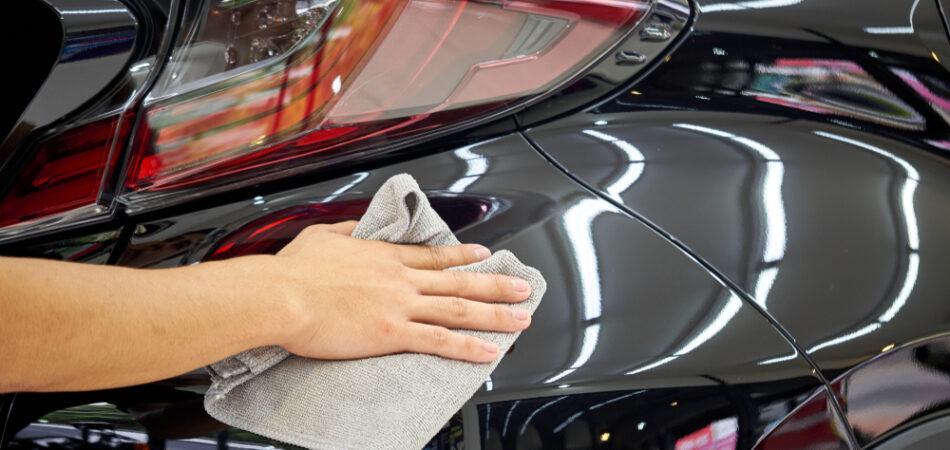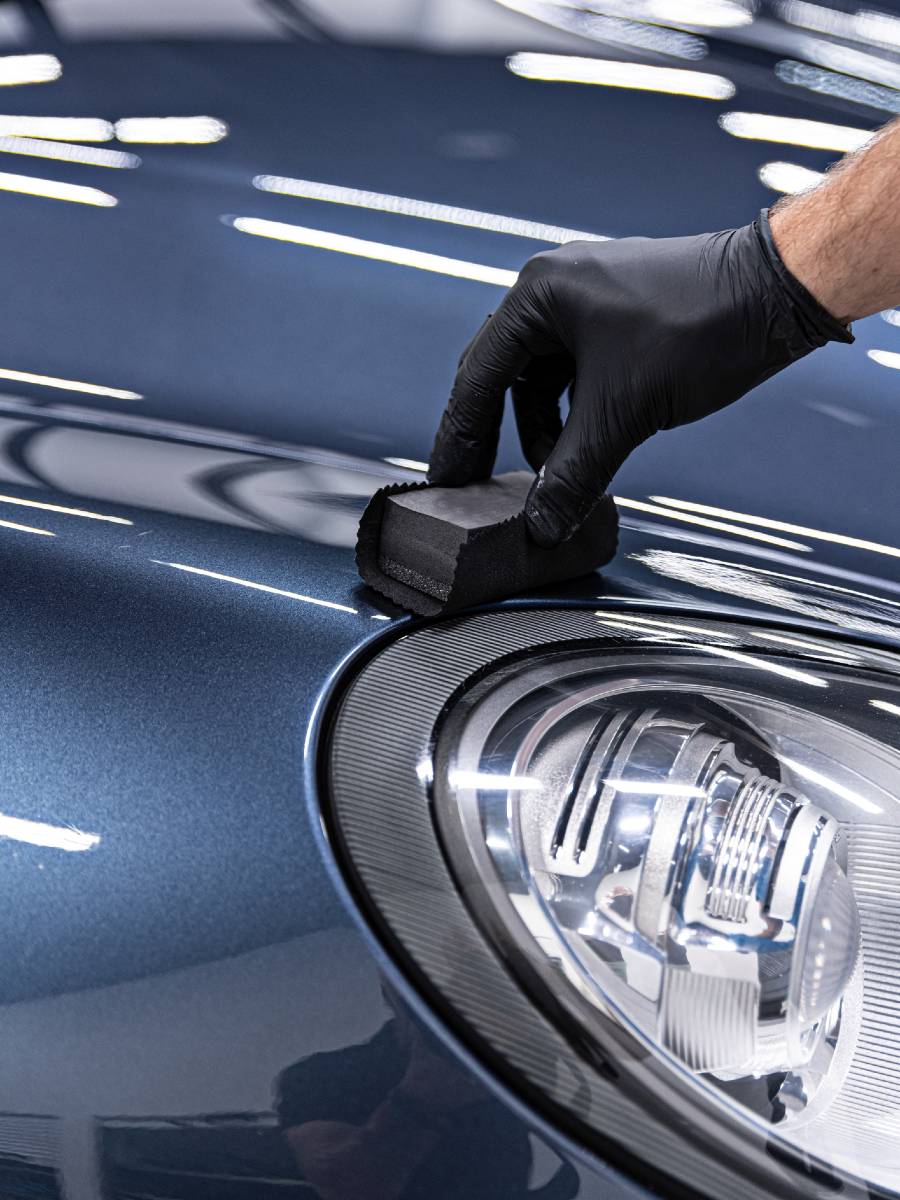Ceramic Layer vs. Typical Wax: Which Supplies Better Long-Term Protection?
The argument in between ceramic coverings and traditional wax for automobile protection has amassed significant attention amongst automotive lovers and professionals alike. Ceramic coatings boast exceptional long life and resistance to environmental variables, yet the complexity of their application raises inquiries regarding access and functionality.
Introduction of Ceramic Covering
Ceramic finishing has actually acquired considerable popularity among vehicle enthusiasts and detailers alike because of its advanced protective qualities. This ingenious modern technology is made to produce a sturdy, hydrophobic guard over an automobile's paint surface, substantially enhancing its resistance to environmental pollutants such as dust, UV rays, and chemical discolorations. Unlike conventional wax, which offers a short-lived layer of security, ceramic finishes bond at a molecular degree with the paint, supplying resilient durability-- commonly prolonging past two years with proper maintenance.
The application procedure entails meticulous preparation of the car's surface, consisting of cleaning and polishing to make sure optimum adhesion. Once applied, the covering cures to form a durable layer that not only includes depth and gloss to the paint however additionally simplifies maintenance. With its hydrophobic homes, ceramic coating permits water and dirt to glide off even more conveniently, lowering the frequency of washes and lessening the danger of swirl marks.
In addition, ceramic finishes are available in different formulas, permitting individuals to select items tailored to their specific requirements and choices. On the whole, ceramic finish stands for a significant advancement in paint defense technology, supplying exceptional performance contrasted to standard alternatives.
Overview of Typical Wax
Generally considered a staple in vehicle treatment, wax functions as a prominent choice for those looking for a simple approach to improve and secure their automobile's paint - ceramic coating. Automotive wax normally makes up all-natural components, such as carnauba, or synthetic compounds, made to create a protective layer on the surface of the paint. This layer not only improves the car's gloss and shine but also provides a barrier versus environmental pollutants
The application of wax is normally user-friendly, making it available for both specialists and Do it yourself lovers. As soon as used, wax calls for a treating period, after which it solidifies to form a safety shell.
Nonetheless, while wax is efficient for boosting the aesthetic appeal of a car, it is necessary to note that the security it uses might require more regular reapplication contrasted to alternate products, such as ceramic coverings. In general, traditional wax stays a popular option for those focusing on convenience of usage and instant visual improvement.
Sturdiness and Long Life Comparison
While both ceramic finishings and typical wax offer safety advantages for vehicle paint, their sturdiness and durability vary significantly. Traditional wax, typically made from all-natural carnauba or synthetic polymers, typically gives a safety layer that lasts approximately 3 to 6 months. This reasonably brief life-span requires normal reapplication to preserve optimal protection.
In contrast, ceramic layers are engineered from advanced nanotechnology, developing a covalent bond with the paint surface area. This leads to a durable, hydrophobic layer that can endure for 2 to 5 years, depending upon the product and environmental problems. The remarkable toughness of ceramic coatings is credited to their chemical framework, which supplies enhanced resistance to scratches, UV rays, and oxidation.

Defense Against Ecological Aspects
Securing an automobile's paint from ecological aspects is crucial for keeping its appearance and worth over time. Cars are regularly subjected to a variety of components, consisting of UV rays, bird droppings, tree sap, acid rainfall, and road grime, every one of which can jeopardize the integrity of the paintwork.
Ceramic coatings supply a durable defense against these ecological assailants. Unlike standard wax, which can degrade rapidly under UV exposure, ceramic coverings develop a durable, hydrophobic layer that resists the harmful effects of sunshine and environmental pollutants. This innovative innovation creates a chemical bond with the car's surface area, providing premium defense that lasts for years, even in harsh conditions.
Conventional wax, while simpler to use, usually needs constant reapplication and uses limited resistance to pollutants and UV rays. In time, it can break down, leaving the paint prone to scratches and oxidation. In comparison, ceramic finishes keep their protective high qualities longer, dramatically lowering the threat of paint damage and making pop over to this site sure that the automobile maintains its aesthetic appeal. Therefore, ceramic coverings are increasingly recognized as the premium choice for long-term security against ecological variables.
Application and Upkeep Distinctions
The approaches of application and subsequent upkeep for ceramic coatings and traditional wax differ significantly, affecting the general individual experience and effectiveness of each product. Ceramic finishes call for an even more detailed application process, usually involving surface area prep work that consists of cleaning, sanitizing, and brightening the vehicle. When the surface is all set, the ceramic covering is applied in a controlled atmosphere, typically requiring professional proficiency to ensure correct curing and bonding to the paint.

While both items enhance car look, the longer-lasting protection offered by ceramic layers may validate their preliminary financial investment, despite the more demanding application process. Conversely, traditional wax remains a prominent choice for those looking for a less complex, albeit short-term, remedy.

Verdict
In final thought, ceramic coverings demonstrate significant benefits over traditional wax in terms of longevity and environmental protection. With a life-span expanding two to 5 years and premium resistance to UV rays, dust, and chemical stains, ceramic coatings provide a more effective option for long-lasting vehicle maintenance. Although the application procedure may require professional knowledge, the resulting price savings and lowered regularity of reapplication highlight the value of ceramic finishings for those seeking ideal automobile protection.
The discussion between ceramic layers and standard wax for here automobile defense has actually amassed substantial attention amongst vehicle fanatics and experts alike. Unlike typical wax, which offers a temporary layer of defense, ceramic her explanation finishes bond at a molecular level with the paint, offering resilient durability-- frequently extending past two years with appropriate upkeep.
While both ceramic finishings and standard wax deal safety advantages for vehicle paint, their durability and long life vary significantly. For automobile enthusiasts seeking long-term defense, ceramic coverings offer an engaging benefit over conventional wax items.
In verdict, ceramic coatings show substantial benefits over typical wax in terms of longevity and environmental security.